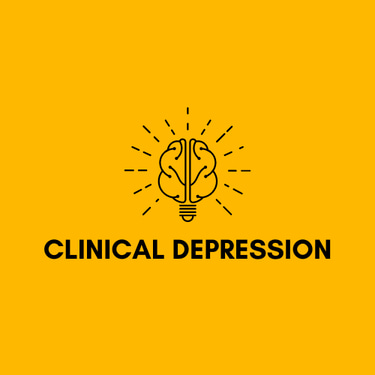For Questions: Text (833)233-0869
Telehealth Mental Health Services: A Lifeline for Managing Anxiety and Depression


Introduction
Anxiety and depression are two of the most prevalent mental health conditions affecting millions worldwide. In recent years, the importance of addressing mental health concerns has become more evident, especially in the face of rising stressors like the COVID-19 pandemic. As the demand for mental health support grows, telehealth mental health services have emerged as a crucial solution, offering accessible, flexible, and effective treatment options.
In this comprehensive guide, we will explore how telehealth mental health services are revolutionizing care for those dealing with anxiety and depression. We'll cover the benefits, different types of services available, how they work, and why they're a game-changer for those in need of mental health support.
Understanding Anxiety and Depression
What is Anxiety?
Anxiety is a natural response to stress, but when it becomes overwhelming or chronic, it can interfere with daily life. Common anxiety disorders include generalized anxiety disorder (GAD), panic disorder, social anxiety disorder, and specific phobias. Symptoms often include:
Constant worry or fear
Rapid heartbeat
Restlessness or irritability
Fatigue
Difficulty concentrating
Sleep disturbances
What is Depression?
Depression is a mood disorder that affects how you feel, think, and handle daily activities. It can manifest as persistent sadness, a lack of interest in activities you once enjoyed, and changes in appetite or sleep. Symptoms of depression include:
Persistent sadness or hopelessness
Fatigue or loss of energy
Difficulty concentrating or making decisions
Insomnia or sleeping too much
Appetite changes
Thoughts of death or suicide
Both anxiety and depression can range from mild to severe, and many people experience both conditions simultaneously. This makes it essential to seek professional help when symptoms begin to affect one's quality of life. Fortunately, telehealth mental health services offer a convenient and effective way to manage these conditions.
What Are Telehealth Mental Health Services?
Telehealth, or telemedicine, refers to the use of digital technologies to deliver healthcare remotely. In the context of mental health, telehealth services allow individuals to receive therapy, counseling, and psychiatric care through video conferencing, phone calls, messaging, or mobile apps. This method of treatment eliminates the need for in-person visits, making it easier for people to access mental health care from the comfort of their own homes.
Types of Telehealth Mental Health Services
There are various types of telehealth mental health services that cater to individuals with anxiety and depression. These include:
Online Therapy (Teletherapy):
Teletherapy involves sessions with licensed mental health professionals through video calls, phone calls, or secure messaging platforms. Cognitive-behavioral therapy (CBT), a common treatment for anxiety and depression, can be effectively delivered via telehealth.
Psychiatric Consultations:
Telepsychiatry allows patients to consult with psychiatrists for medication management. Medications like antidepressants and anti-anxiety medications can be prescribed and monitored through telehealth visits.
Support Groups:
Online support groups provide a space for individuals to connect with others experiencing similar challenges. These groups are often moderated by mental health professionals and can offer emotional support and shared coping strategies.
Mental Health Apps:
Various apps provide self-guided therapy exercises, mood tracking, meditation, and relaxation techniques. While they are not a substitute for professional care, they can be a useful supplement to telehealth services.
How Do Telehealth Mental Health Services Work?
Telehealth services are designed to be user-friendly and accessible. Here’s how the typical process works:
Choose a Provider:
Start by selecting a telehealth provider that offers mental health services. Many healthcare providers, hospitals, and clinics now offer virtual mental health services, while there are also platforms dedicated specifically to online therapy.
Schedule an Appointment:
Once you've chosen a provider, you can schedule a virtual appointment at a time that works for you. Many platforms offer flexible scheduling, including evenings and weekends, making it easier to fit therapy into your routine.
Attend Your Session:
On the day of your appointment, you'll receive a link or phone number to connect with your therapist or psychiatrist. Sessions typically last 30 to 60 minutes, depending on your needs.
Follow-Up:
After your initial session, your therapist will work with you to develop a treatment plan, which may include regular teletherapy sessions, medication management, or additional resources like self-guided exercises or support groups.
Benefits of Telehealth Mental Health Services for Anxiety and Depression
Telehealth mental health services offer numerous advantages, especially for individuals dealing with anxiety and depression. Some of the key benefits include:
1. Accessibility and Convenience
One of the biggest challenges for people with anxiety and depression is getting the help they need when traditional in-person appointments may be daunting or inaccessible. Telehealth eliminates the need for travel, long wait times, and other barriers that can prevent people from seeking help. With telehealth services, care is just a click away, whether you’re at home, at work, or on the go.
2. Flexibility
Telehealth mental health services offer greater flexibility in terms of scheduling. People with anxiety or depression may struggle with rigid schedules, especially when dealing with flare-ups. Telehealth allows patients to schedule appointments at their convenience, including during off-hours, weekends, or from different time zones.
3. Comfort and Privacy
For many people, the thought of sitting in a waiting room or meeting a therapist in person can be overwhelming. Telehealth offers the comfort of attending sessions in a familiar environment, reducing the stress and anxiety that can come with traditional therapy settings. Additionally, telehealth platforms are secure and ensure confidentiality, giving patients peace of mind.
4. Cost-Effectiveness
Telehealth services can be more affordable than traditional therapy. Since patients don’t need to commute or take time off work for appointments, they can save money and time. Additionally, many insurance providers now cover telehealth mental health services, making them more accessible to a broader range of individuals.
5. Continuity of Care
Telehealth allows for ongoing communication with mental health professionals, ensuring continuity of care. For people with chronic conditions like anxiety and depression, consistent and frequent contact with healthcare providers is crucial. With telehealth, patients can attend sessions more regularly without the logistical challenges of in-person visits.
The Future of Telehealth in Mental Health Care
As telehealth continues to evolve, its role in mental health care will only expand. Advances in technology, such as artificial intelligence (AI) and virtual reality (VR), are already being explored as potential tools for enhancing mental health treatment. For example, AI-powered chatbots can provide immediate support and coping strategies, while VR can be used for exposure therapy for anxiety disorders.
Furthermore, as mental health awareness grows and the stigma around seeking help decreases, more people will likely turn to telehealth for their mental health needs. This trend is especially important for underserved populations, such as those in rural areas or with limited access to traditional mental health care.
Overcoming Challenges in Telehealth Mental Health Services
While telehealth offers numerous benefits, it is not without challenges. Some individuals may have limited access to reliable internet or technology, making it difficult to participate in virtual therapy. Others may find it harder to connect emotionally with a therapist through a screen. Addressing these barriers will be essential as telehealth continues to grow.
Additionally, ensuring that telehealth services maintain high standards of care and confidentiality is critical. Mental health professionals must be trained in providing effective treatment in a virtual setting, and telehealth platforms must prioritize patient privacy and data security.
Conclusion
Telehealth mental health services have emerged as a powerful tool in the fight against anxiety and depression. By offering accessible, flexible, and effective care, telehealth has opened up new avenues for those struggling with mental health challenges. Whether through teletherapy, psychiatric consultations, or mental health apps, individuals now have more options than ever to seek the support they need.
As we move forward, the role of telehealth in mental health care will likely continue to grow, providing a lifeline for millions of people in need. If you're dealing with anxiety or depression, consider exploring telehealth mental health services as a convenient and effective option for managing your mental health.
©2025
Clinical Depression
For Questions: Text
(833) 233-0869
